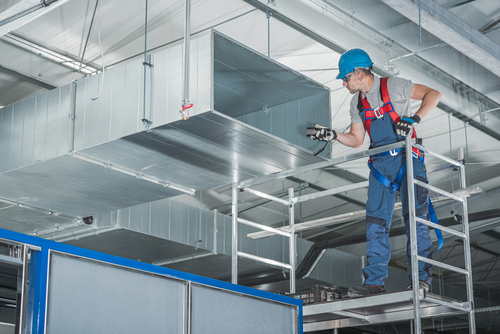The global HVAC industry is undergoing a transformational shift, driven by the convergence of the Internet of Things (IoT), cloud computing, artificial intelligence (AI), and sustainability initiatives. These trends are redefining how HVAC systems are designed, managed, and secured across residential, commercial, and industrial environments.

Frost & Sullivan’s latest analysis of the HVAC sector highlights the growing role of smart and connected HVAC solutions in enhancing operational efficiency, reducing energy consumption, and ensuring long-term sustainability. The widespread adoption of IoT sensors and cloud-based platforms now enables real-time monitoring, predictive analytics, and proactive maintenance—minimizing downtime while maximizing performance.
At the same time, the rise of AI and machine learning (ML) is unlocking powerful data-driven insights, helping to optimize system operations, extend equipment lifespan, and tailor climate control to occupant needs. These technologies also support smarter retrofitting decisions and improved design planning in both new and existing buildings.
Cybersecurity Emerges as a Core Priority for Smart HVAC
With HVAC systems increasingly integrated into wider building automation and enterprise IT networks, cybersecurity is taking center stage. Smart HVAC represents a growing target segment for the cybersecurity industry, prompting a push toward robust, end-to-end solutions.
“Securing connected systems requires identifying unauthorized devices, monitoring abnormal behavior, encrypting sensitive data, and implementing strict access controls,” said Dennis Marcell Victor, growth expert at Frost & Sullivan. “Adopting a zero-trust framework with continuous monitoring and network segmentation will be essential to ensure resilience.”
AI and ML will be pivotal in detecting threats in real time, while integrated cybersecurity solutions—including ransomware prevention and device authentication—are expected to become standard in next-generation HVAC deployments.
Energy-Efficient Innovations and Evolving Business Models
Environmental regulations and global sustainability goals are driving HVAC manufacturers to adopt low-GWP (global warming potential) refrigerants and design systems optimized for energy efficiency. Meanwhile, the booming demand for precision cooling in data centers—fueled by cloud computing and edge technologies—is pushing innovation in scalable, high-performance HVAC systems.
In addition, the emergence of HVAC-as-a-Service (HVACaaS) is transforming how customers engage with HVAC providers. Offering flexible, subscription-based models, HVACaaS can reduce capital expenditures while delivering guaranteed performance, proactive service, and enhanced customer satisfaction, according to the report.
Enabling Smarter Buildings Through Interoperability
The adoption of open communication protocols such as BACnet/IP and Modbus is gaining traction, helping ensure seamless integration between HVAC systems and broader building management infrastructure. This trend supports vendor-agnostic environments and promotes greater flexibility in system upgrades and expansions.
As the HVAC industry continues to evolve, companies that embrace digital transformation, prioritize cybersecurity, and align with sustainable practices will be best positioned to lead in the era of smart buildings and connected ecosystems, according to the report.
The Frost & Sullivan report is available here.
Make sure to sign up for Facilities Management Advisor’s upcoming webinar, “Cooling Tower Maintenance: Why It’s Important and Equipment Needed.” More information and FREE registration are available here.
